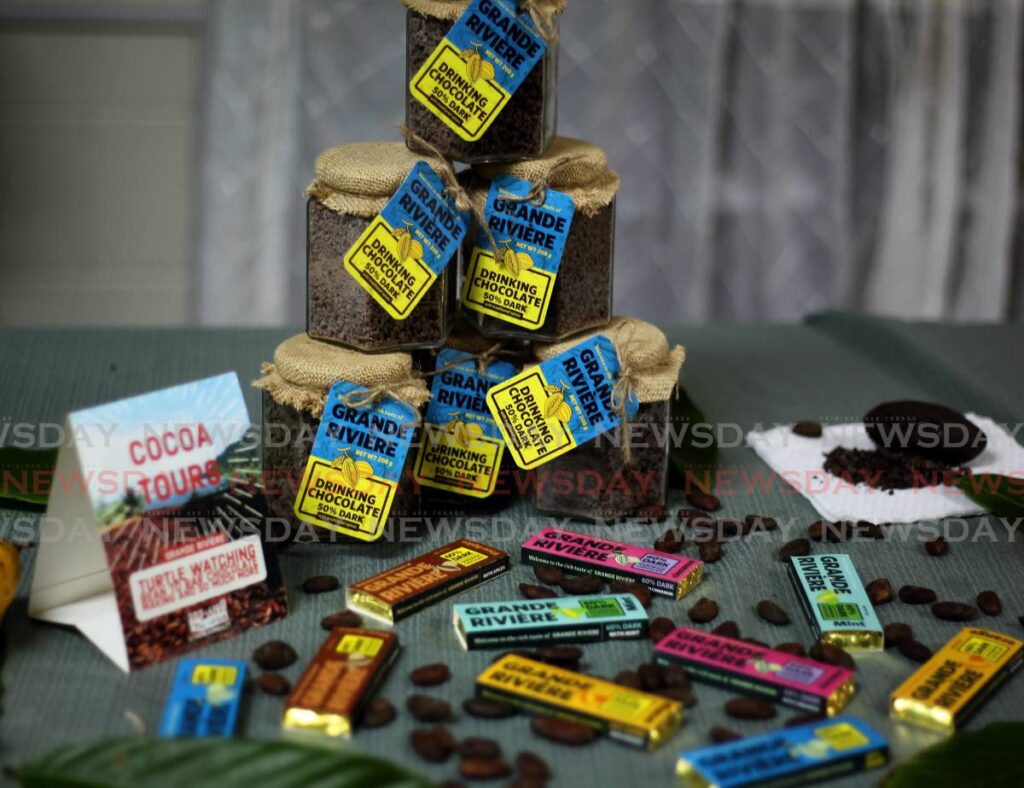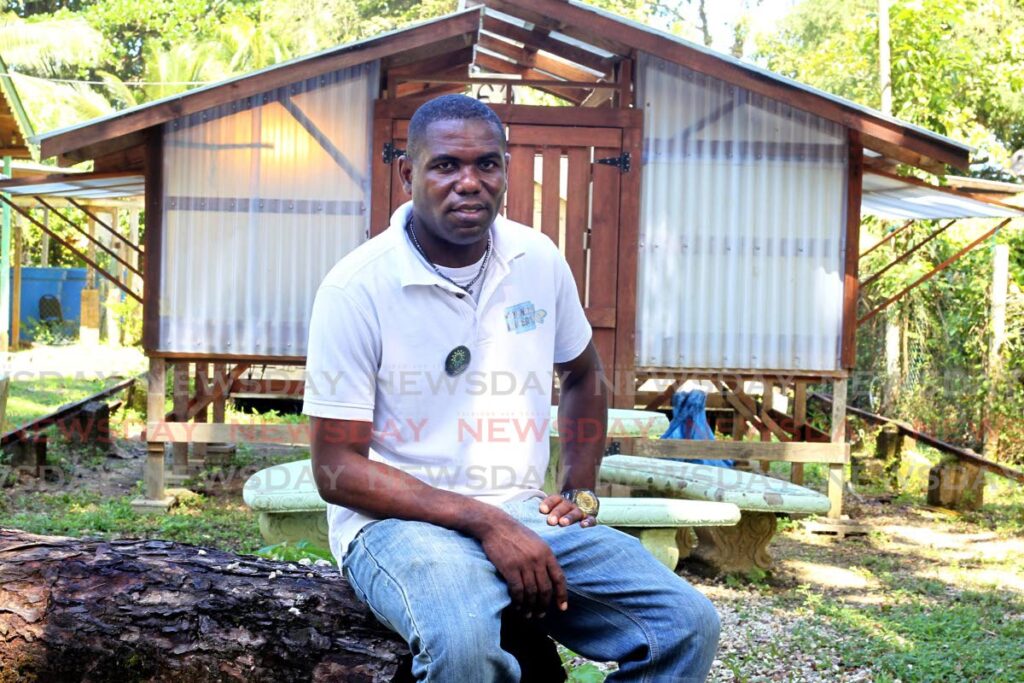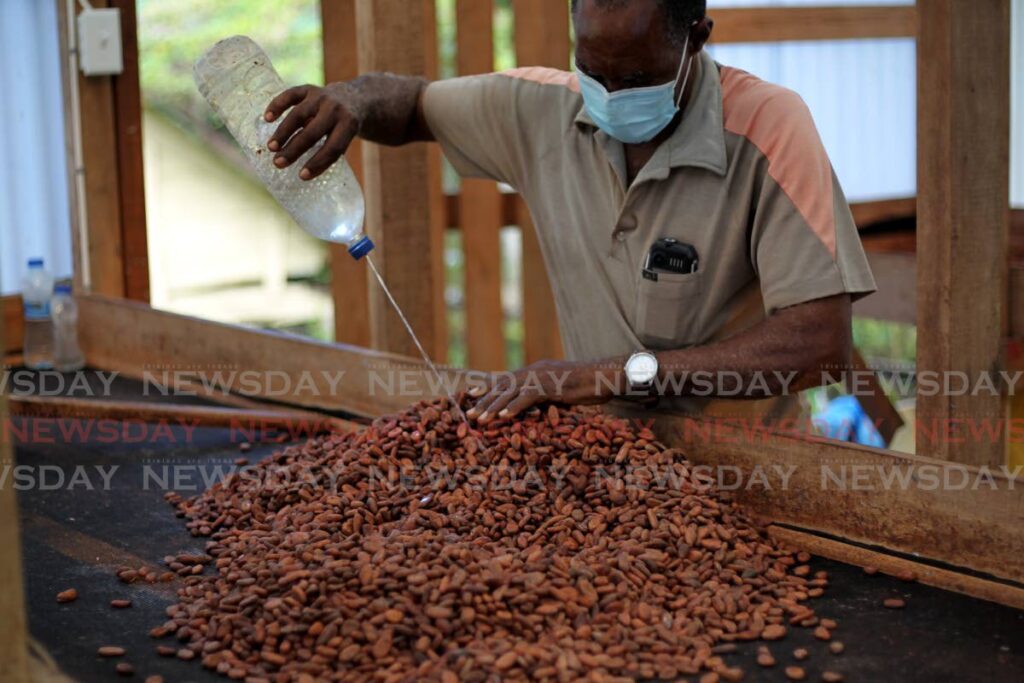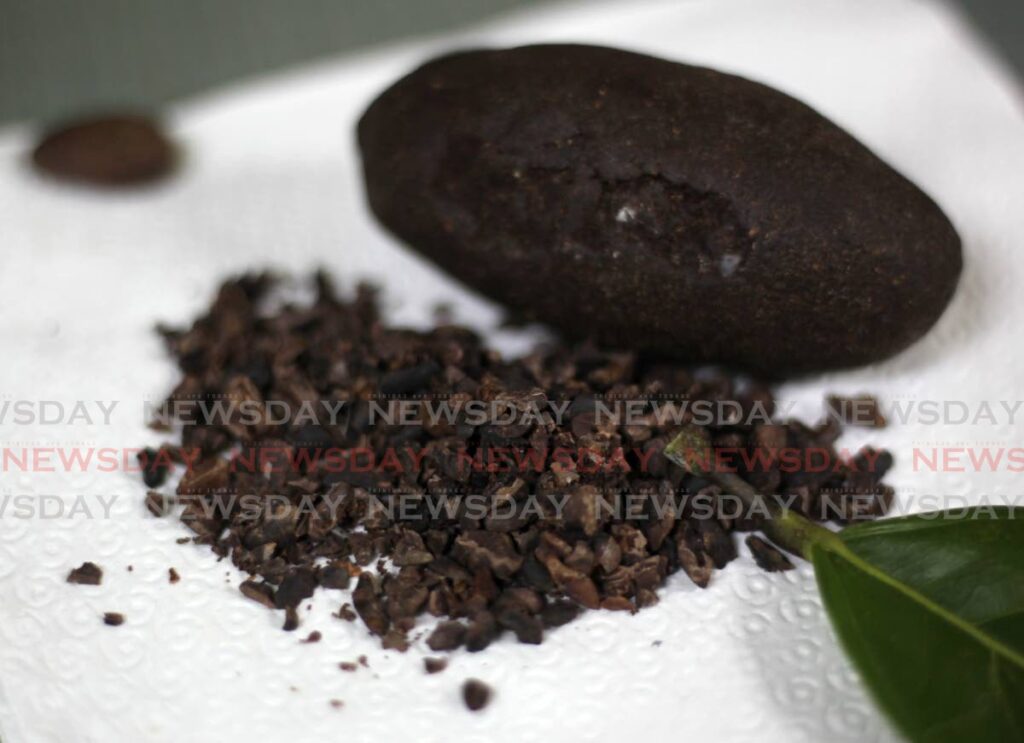Grande Riviere Chocolate Company aims for regional market

The Grande Rivíere community is internationally renowned as a turtle watching destination.
Over the years, hundreds of tourists have flocked to rural northeastern village to witness the natural phenomena of turtles, including the endangered leatherbacks, laying their eggs on the shores of the Atlantic Ocean.
A few months later even more visitors return to see the tiny hatchlings off on their new adventure.
But the area has much more to offer and is building a name for itself in the local cocoa industry. The Grande Riviere Chocolate Company was established on September 1, 2016 and produces high quality 60 per cent dark chocolate and cocoa-based products using the country’s internationally recognised Trinitario cocoa.
During a recent visit, Business Day was given a tour of its base of operations.
David Silverthorn, one of its directors, began his career in the village as a turtle tour operator. He said his interest in turtles began during his days in school where he participated in a turtle conservation project.

After the inception of the company in 2016, Silverthorn decided to expand his horizons and learn more about the industry.
He was trained, like many others in the local cocoa industry, by the umbrella body Alliance for Rural Communities (ARC). ARC trains members of rural communities how to produce dark chocolate and chocolate-based products.
It has also branched out to training in other countries throughout the region including St Lucia and Suriname.
Silverthorn said soca star Machel Montano began his journey in the cocoa industry under ARC, later forming his own chocolate company.
“Everything comes from the community and surrounding communities,” said Silverthorn. “The only thing that is not local is the sugar which comes from Guyana (Demerara) but we chose that because it is organic and we try to keep everything organic.”
The artisan chocolate products are all made by hand. The small business employs six people in its operations, including four directors and two workers, with contributions from five community cocoa farmers from Monte Video to Matelot.
One of the farmers, Matthew Charles, is also a director of the company. Charles also prepares the cocoa beans every day, cleaning them while they dry under the cocoa shed and monitoring the fermentation process using a tried and true method of placing the beans in a fermentation box and covering them with banana leaves.

Silverthorn said cocoa beans are purchased by the company from farmers at $10 per kilogramme, either wet or dry.
He said there are a lot of new farmers who are still learning the process of properly fermenting and drying the beans but added that understanding the process is important as it is reflected in the quality of the final product. “You have to have that process down pat.
He said the quality of the chocolate is also premised in part to the Trinitario bean, which is recognised by many international chocolatiers. Grande Riviere’s products can be found in over 20 gourmet stores across the country as well as larger supermarkets including Massy Stores and Xtra Foods.
While they have not yet penetrated the regional market, he is hopeful that the quality of their products will propel them further.
“Seeing that Trinitario is a high-flavoured bean, and is also disease resistant, it should be making its way out there, but we are not on the international market yet. ARC handles that part of it.”
He said, however, from what he has observed, many people gravitate to the local chocolate because it is healthier than imported alternatives. “The higher the percentage, the healthier it is.”
As far as local competitors, Silverthorn is confident there is enough space for all the cocoa-producing villages across the country to successfully ply their trade. “We don’t have much competition. There are a lot of (local) companies, and everyone has their own flavours.”
He said, for example, Brasso Seco’s chocolatiers are making a coffee-flavoured bar.
Current favourites of the Grande Rivíere Company are the orange and cinnamon flavoured bars. They have also added mint and five-spiced flavours to their selection, in addition to their original dark chocolate bar. All their bars are made with 60 per cent dark chocolate.
The company also makes cocoa balls and instant drinking chocolate.
“The traditional cocoa ball has all of the spices in it. Traditionally, you have to grate, boil, and strain it and discard any residue. But with the instant drinking chocolate, we added all the spices as usual, but the residue melts on your tongue, so a lot of people would buy the drinking chocolate and eat it out because it is slightly sweetened,” he joked.
“Instead of drinking tea, they eat it, and so that’s where we got the idea to make the five-spiced chocolate bar.”
Cocoa tourism and the impact of the pandemic
Like most local industries, the company was severely affected by the pandemic. The company hosts two cocoa-themed tours. The first is an estate-to-bar tour where local and international tourists can visit one of their community cocoa farms, see the trees, taste the fruit, and see how the beans are fermented and dried.
There is also the bean-to-bar tour at the factory where visitors can see the process of roasting and grinding the beans after they come from the cocoa shed, then moulding the chocolate into bars. Visitors are also given a brief history of the area.

Both tours are available for $120 for adults and children over 12 and $60 for children under 12.
“The pandemic affected tours a lot,” said Silverthorn. We would have many visitors internationally during turtle season because we are turtle village. Grande Rivíere is known for the highest density of turtle nesting and people come to see that.
“The factory is housed in the same building where the tours start (and) we’re not getting many visitors. The tours would generate a lot of income for us.”
He said although the cocoa tours have restarted, the tourism industry is at a standstill and there are no international visitors coming to the area. He said a few locals may visit but the company may only see about six people in a month.

Silverthorn said the company has faced other challenges including cash flow issues. “Sometimes ARC will take chocolate to distribute, and we have to wait a long time to receive payment from different companies. When (ARC) does get paid, some of the money goes to them and what’s left (for us) isn’t much.”
He said the company’s aim is to eventually enter the regional market.
“Our mission is to manufacture and supply chocolate and chocolate-based products locally, regionally, and internationally while educating consumers about the medicinal value and history of the fine choice cocoa in our community.
“We wish to become the preferred manufacturer of dark chocolate in the western hemisphere adding value to our country, using both natural and organic products from our communities, while teaching other individuals and communities to become self-sustainable and self-reliant.”
For more information on the company's cocoa products and tours, interested parties can visit their Instagram page @granderivierechocolate, or call 721-0406.


Comments
"Grande Riviere Chocolate Company aims for regional market"